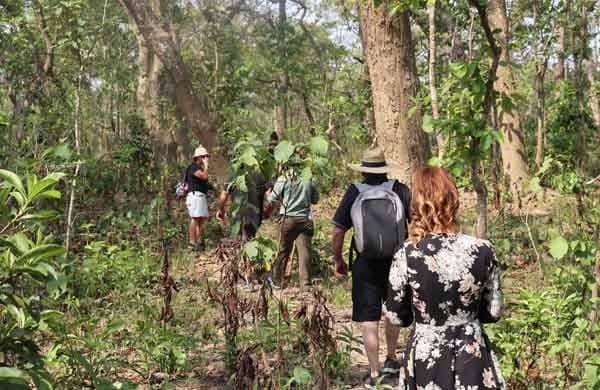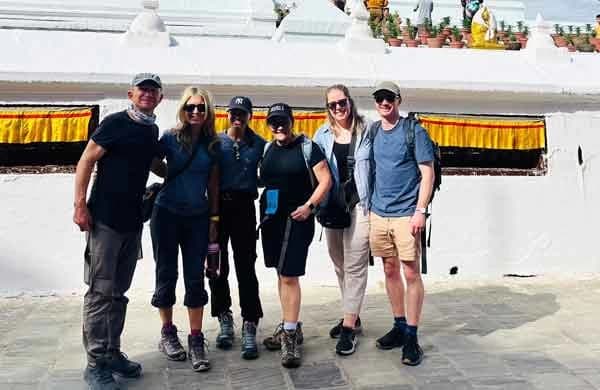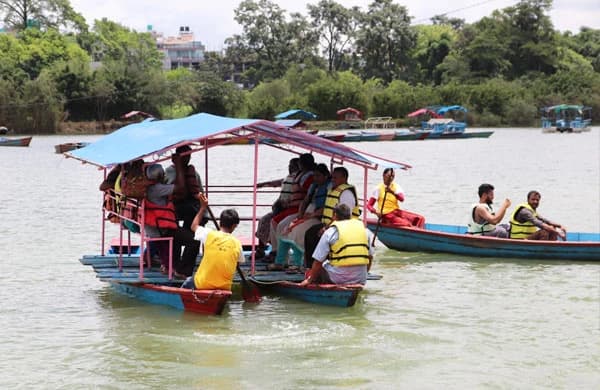Lumbini Tour Overview
Lumbini is a small town in the Rupandehi district of Nepal, renowned as the birthplace of Gautama Buddha, the founder of Buddhism. This holy site attracts millions of visitors yearly who pay homage to the Buddha and learn about his teachings. During the Lumbini tour, you will delve deep into the teachings of Buddhism and its different practices and beliefs, leaving you feeling informed and enlightened.
Rest assured, an experienced and knowledgeable guide will accompany you throughout the Tour, enriching your experience with their expertise on Buddhism and the history of Lumbini. You will visit where Gautam Buddha was born and spent his childhood. During the Tour, you will see numerous monasteries and landmarks.
Lumbini Tour Highlights
- Embark on a journey through time and space to the birthplace of spiritual grace, Lord Gautam Buddha
- Visit the Maya Devi Temple, where history comes alive, a sacred site where Buddha was born
- Explore the Ashoka pillar built by the great emperor Ashoka in the 3rd century BC
- Visit the Lumbini Museum
- Enjoy peace and tranquillity during your walk in the Sacred Garden
- Visit the World Peace Pagoda that carries the symbol of hope
- Visit several monasteries like Myanmar Golden Temple, Chinese Monastery, Japanese Peace Stupa, and Vietnamese Monastery
- Away from the chaos of bustling cities, you will get to unwind and rejuvenate
- Join yoga and meditation classes
The Gautam Buddha
Gautama Buddha, also known as Siddhartha Gautama, was a spiritual teacher who lived in ancient India and founded the Buddhist religion. He was born in 563 BC in the city of Lumbini, Nepal. According to the legend, he was born into a royal family, and his father was a king named Suddhodana.
As a child, Siddhartha was sheltered from the realities of life outside of the palace walls. However, one day, he left the palace. He saw the suffering of the people in the world, including poverty, sickness, and death. This experience profoundly impacted him and caused him to question the nature of existence and the meaning of life.
At 29, Siddhartha left his luxurious life behind and embarked on a spiritual journey to find the answers he was seeking. He studied with several prominent spiritual teachers but ultimately found that their teachings needed to be improved.
He then decided to undertake a period of intense meditation, during which he achieved enlightenment, or "Bodhi." After his enlightenment, Siddhartha became known as the Buddha, which means "awakened one." He spent the rest of his life traveling throughout India and Nepal, teaching the principles of Buddhism to all who would listen. His teachings centered on the Four Noble Truths and the Eightfold Path.
The Four Noble Truths are:
- The truth of suffering: Life is filled with suffering, pain, and sorrow.
- The truth of the cause of suffering: The cause of suffering is craving and attachment to material things.
- The truth of the end of suffering: It is possible to end suffering by eliminating craving and attachment.
- The truth of the path to the end of suffering: The Eightfold Path is the path to the end.
The Eightfold Path is a set of guidelines for moral and ethical behavior, mindfulness, and wisdom. The Eightfold Path includes:
- Right understanding: Understanding the Four Noble Truths and the nature of reality.
- Right intention: Developing a positive and compassionate attitude.
- Right speech: Speaking truthfully and kindly.
- Right action: Living a life of ethical conduct.
- Right livelihood: Earning a living in a way that is ethical and does not harm others.
- Right effort: Making a sustained effort to cultivate positive qualities and eliminate negative ones.
- Right mindfulness: Cultivating awareness and attention to the present moment.
- Right concentration: Developing the ability to focus the mind and achieve deep states of meditation.
The teachings of Gautama Buddha have had a profound impact on the world, and Buddhism has become one of the major religions. Today, there are over 500 million Buddhists worldwide, and Buddhist teachings inspire people to live lives of compassion, mindfulness, and wisdom.
Things to do in Lumbini
Visit the Sacred Garden
Sacred Garden is the main attraction in Lumbini, which houses the Maya Devi Temple, the Ashoka Pillar, and several monasteries built by different countries. The temple is where the Buddha was born, and the Ashoka Pillar is a testament to the ancient ruler's dedication to Buddhism. The monasteries built by different countries in their architectural styles offer visitors a chance to experience the diversity of Buddhist traditions.
Explore the monastic zone
The monastic zone is an area in Lumbini where several monasteries have been built, reflecting different schools of Buddhism. Visitors can walk through the monasteries, learn about Buddhist practices and cultures, and interact with the monks.
Visit the Lumbini Museum
Lumbini Museum is an excellent place to learn about the history and significance of Lumbini. The museum has several exhibits on display, including artifacts and sculptures from the Mauryan and Kushan periods, as well as a collection of photographs documenting the development of Lumbini over the years.
Take a meditation class
Lumbini is a place of spiritual significance, and many visitors come here to deepen their meditation practice. Several monasteries in the monastic zone offer meditation classes, which provide an excellent opportunity to learn from experienced practitioners and connect with like-minded individuals.
Explore the surrounding area
Lumbini is surrounded by several picturesque villages and towns worth exploring. Visitors can take a bicycle tour, visit the nearby Kapilvastu Palace ruins, or explore the nearby sal forests.
Lumbini tour Attractions
- Maya Devi Temple: Maya Devi Temple is the most important in Lumbini. It marks the exact spot where the Buddha was born. Likewise, the sacred pool inside the temple is where the Buddha took his first bath.You can expect to spend a few hours at the temple, learning about the Buddha's birth and early life.
- Ashoka Pillar: Ashoka Pillar is a significant landmark in Lumbini. Emperor Ashoka erected it in the 3rd century BC. It carries an inscription declaring Lumbini the birthplace of the Buddha. You can expect to spend some time at the pillar, learning its history and significance.
- Sacred Garden: Sacred Garden is the main attraction in Lumbini. The garden is divided into several zones, including the monastic zone, the meditation zone, and the cultural zone. Spend a few hours exploring the different zones, visiting the monasteries, and interacting with the monks.
- Learn about Buddhism: Lumbini is a significant site for Buddhists, and during your Tour, you can expect to learn about Buddhism, its teachings, and practices. You can attend a meditation class at one of the meditation centers, where experienced practitioners will guide you through the training.
- Attend a Puja ceremony: A puja ceremonyis a traditional Buddhist ritual involving chanting and offerings. You can attend one at one of the monasteries in the evening. It will be a unique and spiritual experience that you must try once.
- Explore the Kapilvastu Palace ruins: Kapilvastu Palace ruins used to be the capital of the Shakya Kingdom, where the Buddha spent his early years. Explore the ruins, which provide insight into the ancient city's layout and architecture. Similarly, learn about the Shakya Kingdom's daily life and customs.










